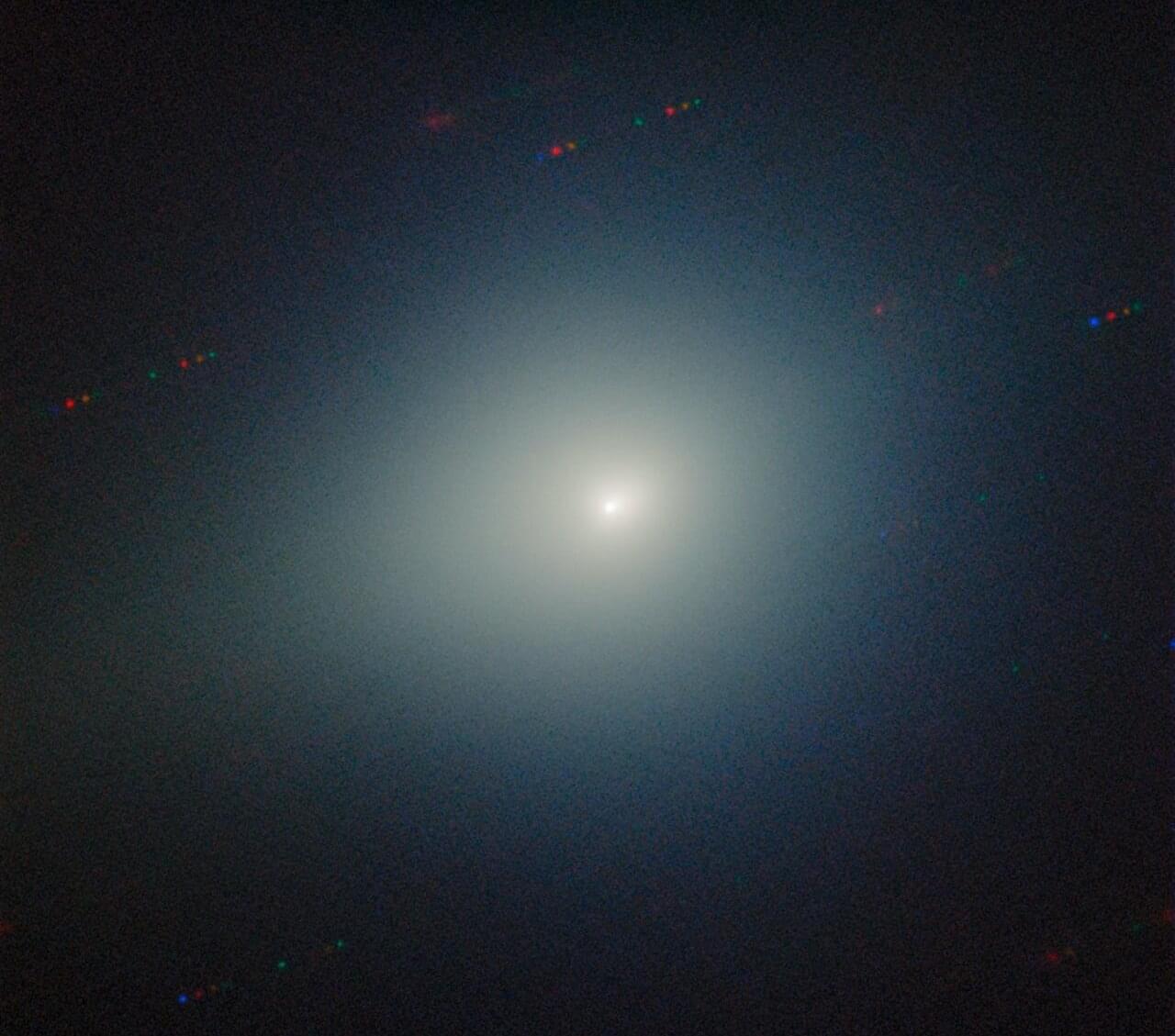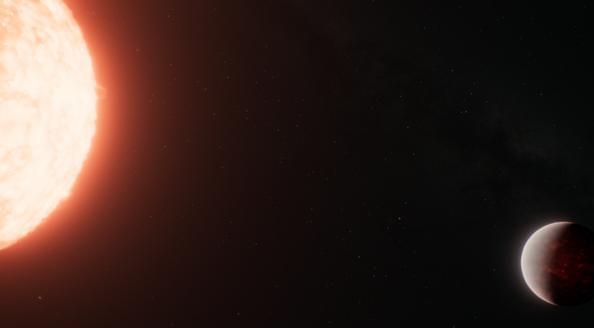Scientists have for the first time mapped the 3D structure of an exoplanet’s atmosphere, uncovering violent winds and bizarre weather patterns.




Astronomers from the University of Hawai’i (UH) at Manoa and elsewhere have observed the Taurus star-forming region, which resulted in the discovery of planetary-mass and stellar companions of two ultracool dwarf stars. The new finding was presented in a paper published December 4 on the pre-print server arXiv.
Taurus molecular cloud (TMC-1) is an interstellar molecular cloud hosting a stellar nursery, which contains hundreds of newly formed stars. Given that TMC-1 is located only 430 light years away from Earth, it is possibly the nearest large region of star formation.
The relatively young age of this region, estimated to be some 1–5 million years old, makes it an excellent window for astronomers into the earliest stages of wide-orbit planet and brown dwarf formation.

Stanford engineers debuted a new framework introducing computational tools and self-reflective AI assistants, potentially advancing fields like optical computing and astronomy.
Hyper-realistic holograms, next-generation sensors for autonomous robots, and slim augmented reality glasses are among the applications of metasurfaces, emerging photonic devices constructed from nanoscale building blocks.
Now, Stanford engineers have developed an AI framework that rapidly accelerates metasurface design, with potential widespread technological applications. The framework, called MetaChat, introduces new computational tools and self-reflective AI assistants, enabling rapid solving of optics-related problems. The findings were reported recently in the journal Science Advances.

Gemini North captured new images of Comet 3I/ATLAS after it reemerged from behind the sun on its path out of the solar system. The data were collected during a Shadow the Scientists session—a unique outreach initiative that invites students around the world to join researchers as they observe the universe on the world’s most advanced telescopes.
On 26 November 2025, scientists used the Gemini Multi-Object Spectrograph (GMOS) on Gemini North at Maunakea in Hawai’i to obtain images of the third-ever detected interstellar object, Comet 3I/ATLAS. The new observations reveal how the comet has changed after making its closest approach to the sun. Gemini North is one half of the International Gemini Observatory and operated by NOIRLab.
After emerging from behind the sun, 3I/ATLAS reappeared in the sky close to Zaniah, a triple-star system located in the constellation Virgo. These observations were taken as part of a public outreach initiative organized by NOIRLab in collaboration with Shadow the Scientists, an initiative created to connect the public with scientists to engage in authentic scientific experiments, such as astronomy observing experiences on world-class telescopes. The scientific program was led by Bryce Bolin, a research scientist from Eureka Scientific.

“What really sets this planet apart is its anomalously low density. It is less dense than you would expect if it had an Earth-like composition,” said Dr. Johanna Teske.
What can a rocky molten exoplanet with an atmosphere teach astronomers about planetary formation and evolution? This is what a recent study published in The Astrophysical Journal Letters hopes to address as a team of scientists investigated a thick atmosphere enveloping an exoplanet where previous hypotheses state it shouldn’t exist. This study has the potential to help scientists not only challenge longstanding hypotheses regarding exoplanets but also gain new insight into planetary formation and evolution.
For the study, the researchers used NASA’s James Webb Space Telescope (JWST) to observe TOI-561 b, which is located approximately 86 parsecs (280 light-years) from Earth and whose radius is 1.4 times of Earth. What makes TOI-561 unique is its orbit is only 11 hours long, resulting in an equilibrium temperature of approximately 2,500 Kelvin (2,227 degrees Celsius/4,040 degrees Fahrenheit).

The moon’s surface may be more than just a dusty, barren landscape. Over billions of years, tiny particles from Earth’s atmosphere have landed in the lunar soil, creating a possible source of life-sustaining substances for future astronauts. But scientists have only recently begun to understand how these particles make the long journey from Earth to the moon and how long the process has been taking place.
New research from the University of Rochester, published in Communications Earth & Environment, shows that Earth’s magnetic field may actually help guide atmospheric particles—carried by solar wind—into space, instead of blocking them. Because Earth’s magnetic field has existed for billions of years, this process could have steadily moved particles from Earth to the moon over very long periods of time.
“By combining data from particles preserved in lunar soil with computational modeling of how solar wind interacts with Earth’s atmosphere, we can trace the history of Earth’s atmosphere and its magnetic field,” says Eric Blackman, a professor in the Department of Physics and Astronomy and a distinguished scientist at URochester’s Laboratory for Laser Energetics (LLE).

A new warp-drive study proposes a novel segmented design that could sidestep many of the problems in the original decades-old concept, bringing the possibility of hyper-fast space travel one step closer to becoming a reality.
Warp drive theory has quickly evolved since the mid-90s, when a concept developed by Mexican physicist Miguel Alcubierre was first described in a landmark paper that provided a scientific basis for hyper-fast travel within general relativity.
While the concept of warp drives was initially popularized in the futuristic realm depicted in Star Trek, Alcubierre took the idea to paper, shaping the fictional idea into a conceptual reality—one that, someday, could potentially also be realized through advanced engineering.

Dr. Somrita Banerjee: “This is the first time AI has been used to help control a robot on the ISS. It shows that robots can move faster and more efficiently without sacrificing safety, which is essential for future missions where humans won’t always be able to guide them.”
How can an AI robot help improve human space exploration? This is what a recent study presented at the 2025 International Conference on Space Robotics hopes to address as a team of researchers investigated new methods for enhancing AI robots in space. This study has the potential to help scientists develop new methods for enhancing human-robotic relationships, specifically as humanity begins settling on the Moon and eventually Mars.
For the study, the researchers examined how a technique called machine learning-based warm starts could be used to improve robot autonomy. To accomplish this, the researchers launched the Astrobee free-flying robot to the International Space Station (ISS), where its algorithm was tested floating around the ISS in microgravity. The goal of the study was to ascertain if Astrobee could navigate its way around the ISS without the need for human intervention, relying only on its algorithm to determine safely traversing the ISS. In the end, the researchers found that Astrobee successfully navigated the tight terrain of the ISS with limited need for human intervention.

THE AUDIOBOOK OF “WHY SPACE? THE PURPOSE OF PEOPLE” IS LIVE! CAN YOU HEAR ME! IT’S LIVE I SAY!
Sorry. Anyway, I know some of you are listeners rather than readers. While for me it is odd to consider listening to my own voice for several hours, I hope you do enjoy it!
Amazon.com: Why Space?: The Purpose of People (Audible Audio Edition): Rick Tumlinson, Rick Tumlinson, Manuscripts Press: Audible Books & Originals.